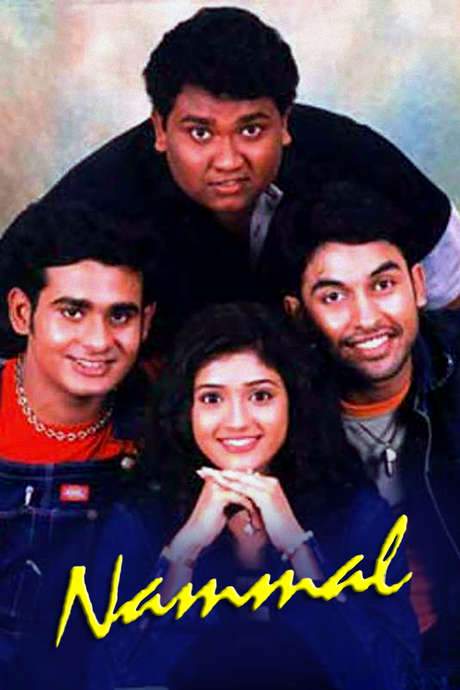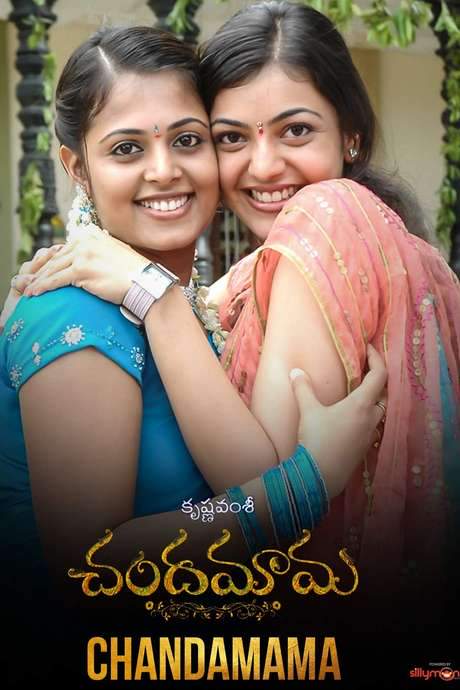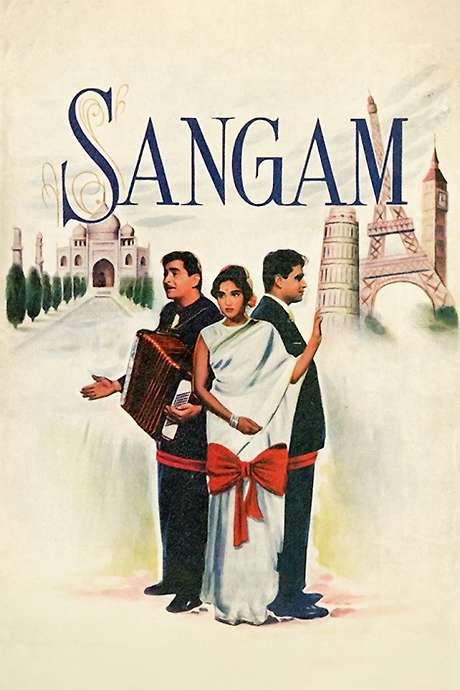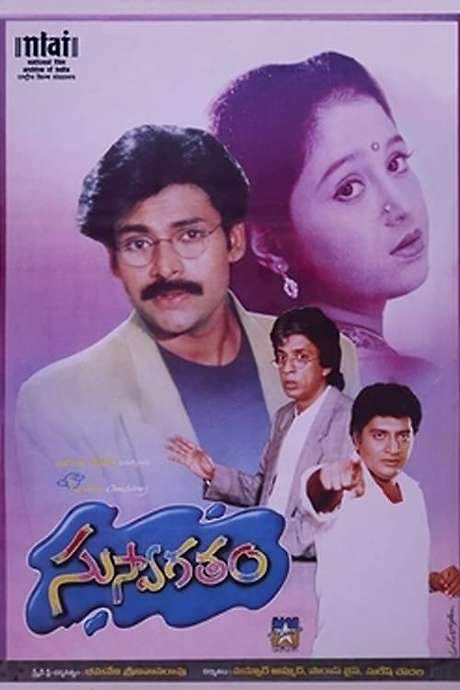
Sundara Kanda
Year: 1992
Runtime: 147 mins
Language: Telugu
Director: K Raghavendra Rao
A newly appointed professor discovers that one of his students is infatuated with him and insists on marriage. He rebuffs her advances and instead weds an orphan, hoping to move on. Undeterred, the student persistently pursues him, turning his attempt at a normal life into a tangled emotional struggle.
Warning: spoilers below!
Haven’t seen Sundara Kanda yet? This summary contains major spoilers. Bookmark the page, watch the movie, and come back for the full breakdown. If you're ready, scroll on and relive the story!
Sundara Kanda (1992) – Full Plot Summary & Ending Explained
Read the complete plot breakdown of Sundara Kanda (1992), including all key story events, major twists, and the ending explained in detail. Discover what really happened—and what it all means.
Shanmugamani arrives as a respected Tamil teacher at a school where he once studied, coming back with a mix of pride and humility. Despite his modest background, his exceptional performance as a student the year he ended twelfth standard earned him recognition, and his return is framed by a sense of duty and tradition. The classroom he steps into is lively, ruled by a clever, restless energy, led by a brilliant yet mischievous student named Priya. Her antics, though entertaining to some, quickly push Shanmugamani to his limits, and he finds fault with every clever trick she plays.
From the start, Priya’s classroom pranks test Shanmugamani’s patience and his ideals about discipline and respect. A pivotal moment arrives when Priya’s peers stage a counterfeit love letter and plant it in the teacher’s desk. The letter is meant to be a joke, but Shanmugamani misreads the situation as one more of Priya’s mischief, and he confronts her with sharp discipline. Priya, however, perceives the incident as a real confession and begins to see Shanmugamani through a different lens. The tension between them escalates as the school’s authority—represented by the headmaster—becomes involved, and Priya ends up suspended, her reputation suddenly under siege.
As the truth gradually unfolds, Shanmugamani discovers that Priya’s supposed “mischief” was more a mirror of the pressures she faces and the loneliness she experiences. He apologizes, attempting to repair the trust that has been damaged. Priya, no longer willing to accept the damage to her own reputation, proposes a bold and provocative solution: she asks for a future together, even though their relationship would violate ethical boundaries and threaten their lives at the school. Shanmugamani refuses, arguing that a teacher should not marry a student, and his steadfast stance is clear despite Priya’s persistent insistence.
Undeterred, Priya pursues him with fierce devotion, escalating her attempts to be close to him. Faced with a love that cannot be, Shanmugamani makes a radical life change: he marries Deivanai, a woman from an orphanage who embodies quiet strength and a patient, unassuming charm. Deivanai’s arrival at his life introduces a new dynamic—she has to navigate her own expectations while learning to fit into a relationship that was shaped by Priya’s earlier presence. Deivanai’s initial dream of a perfect life with his dream partner meets the reality of his past and the haunting presence of Priya’s unresolved feelings.
As the new couple works to build a home, Priya’s influence lingers. Priya, ever practical and determined, helps Deivanai grow in unexpected ways: she coaches her in daily manners, improves her English, and assists in developing a shared rhythm that can coexist with Shanmugamani’s ambitions and the household’s needs. Yet Shanmugamani remains wary of Priya’s role in their life, urging Priya to step back to preserve the harmony of their home. Priya, caught between passion and consequence, doubles down on her efforts to win him in a way that would fulfill her own sense of longing while staying true to the truth of the past.
The emotional spine of the story reveals a hidden truth: Priya is quietly battling cancer, a revelation that reframes every action and every risk she has taken. Deivanai learns of the gravity of Priya’s illness and becomes protective, even as she recognizes Priya’s desire for resolution and affection. Priya’s brave honesty—shared in the end through a recorded speech—offers a final window into her unwavering belief that a teacher should uphold integrity above personal desire, no matter how painful that stance might be.
In Priya’s last moments, a bittersweet decision emerges. Deivanai supports Priya’s final wish: to see Shanmugamani find happiness with her, should the time come to honor Priya’s memory. Priya passes away in her school—still in uniform—her life marked by a quiet dignity and the insistence on dignity for all involved. Her final words are captured on a tape, praising the ethical boundaries that keep teaching and love in proper balance. She entrusts Deivanai with a token of value and speaks of rebirth, suggesting that she would be born again as their child. In the story’s closing image, Shanmugamani and Deivanai place a jewel on a newborn, honoring Priya’s memory and cherishing the possibility of a future where love, respect, and memory coexist.
This tale blends humor, heartache, and moral reflection to explore how relationships between teachers, students, and spouses can be tested by circumstance and time. It invites audiences to consider the responsibilities that come with influence, the resilience required to adapt to unexpected turns in life, and the quiet, enduring power of chosen family. Through its emotional arcs, the film underlines the idea that true devotion can be measured not only by what is freely given but also by the grace to release what cannot be, and by the hope that love, even when it arrives late or in disguise, can still illuminate a path toward healing.
Last Updated: October 09, 2025 at 11:21
Unlock the Full Story of Sundara Kanda
Don't stop at just watching — explore Sundara Kanda in full detail. From the complete plot summary and scene-by-scene timeline to character breakdowns, thematic analysis, and a deep dive into the ending — every page helps you truly understand what Sundara Kanda is all about. Plus, discover what's next after the movie.
Sundara Kanda Timeline
Track the full timeline of Sundara Kanda with every major event arranged chronologically. Perfect for decoding non-linear storytelling, flashbacks, or parallel narratives with a clear scene-by-scene breakdown.

Similar Movies to Sundara Kanda
Discover movies like Sundara Kanda that share similar genres, themes, and storytelling elements. Whether you’re drawn to the atmosphere, character arcs, or plot structure, these curated recommendations will help you explore more films you’ll love.
Explore More About Movie Sundara Kanda
Sundara Kanda (1992) Scene-by-Scene Movie Timeline
Sundara Kanda (1992) Movie Characters, Themes & Settings
Sundara Kanda (1992) Spoiler-Free Summary & Key Flow
Movies Like Sundara Kanda – Similar Titles You’ll Enjoy
Sundarapurushan (2001) Detailed Story Recap
Vamsodharakudu (2000) Complete Plot Breakdown
Nammal (2002) Complete Plot Breakdown
Pattanathil Sundaran (2003) Movie Recap & Themes
Vallavan (2006) Full Movie Breakdown
Chandamama (2007) Ending Explained & Film Insights
Sundari (2021) Detailed Story Recap
Sangam (1964) Complete Plot Breakdown
Motor Sundaram Pillai (1966) Detailed Story Recap
Sundara Killadi (1998) Full Summary & Key Details
Kadhal Desam (1996) Plot Summary & Ending Explained
Ananda Thandavam (2009) Detailed Story Recap
Server Sundaram (1964) Complete Plot Breakdown
Suswagatham (1998) Plot Summary & Ending Explained
Samajavaragamana (2023) Detailed Story Recap

















